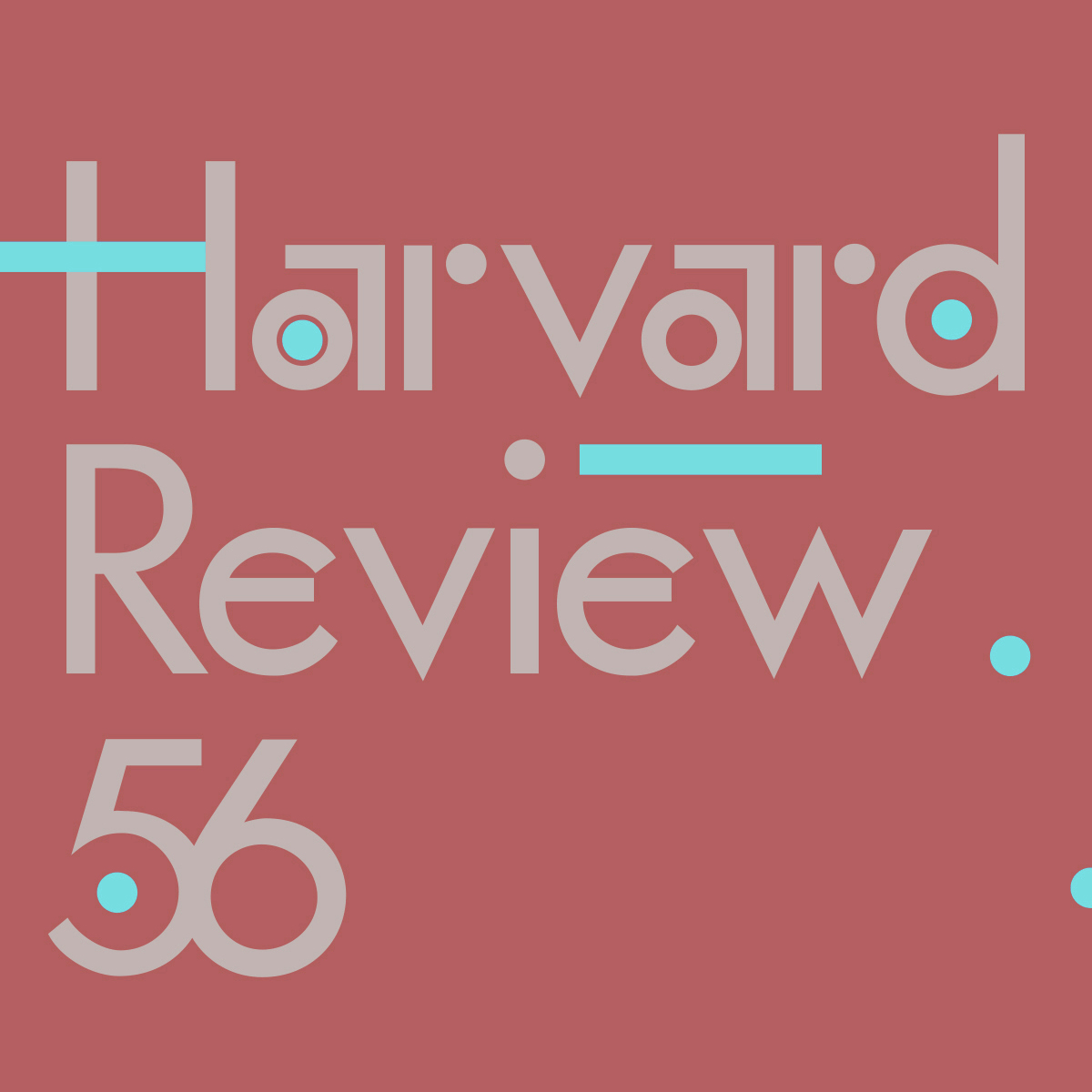HR 56 Editorial
by Christina Thompson
In the fall of 2001 I wrote my very first editorial for Harvard Review. There had been changes at the journal. I was only the second person to hold the position of editor, and I had been planning to introduce myself and write about my vision for the next few years. “Instead,” I wrote, “we find ourselves preoccupied with the changes in our larger world, with a numbness that will not go away and a creeping, pervasive anxiety”—the fallout of September 11.
Nearly twenty years later and here we are again. Of course, it’s different this time. The national unity that followed the collapse of the Twin Towers is now like a hard-to-recall dream, like something that happened to other people in some other place and time. Even before the onset of the pandemic, the country felt mired in unhappiness. There was already something dystopic about our world—an imminent climate crisis, political instability, fragility and insecurity on all sides—to which has now been added an unexpected layer of shock, still more uncertainty, outrage, frustration, and overt unrest.
It’s different in other ways too, more reminiscent of the financial crisis of 2008, which Harvard Review also weathered, thanks to the support of Houghton Library and a generous donor. We know that the current crisis, like that one, will not be over soon, that it is not just medical and political but financial, and that it will likely drive even deeper rifts in our society. Unless, miraculously, it puts us on a path toward fixing what we know is broken.
This issue of Harvard Review—like that of fall 2001—was assembled long before the crisis hit. But we read it now with hindsight, looking for shadowy intimations of doom, signs of prescience, hidden foretellings. Re-reading it now, I am amazed at how many ghosts there are: most prominently in Miciah Bay Gault’s short story, “Ferry,” with its echoes of her ghost story novel, Goodnight Stranger, and Benjamin Gucciardi’s poem, “I Ask My Sister’s Ghost to Take Me with Her,” but in many other places as well.
The dead are everywhere—in Abraham Lincoln’s White House in the Christopher DeWeese poem “Our Fruits and Vegetables Are Wild Plants That Have Been Improved”; in Campbell McGrath’s magnificent celebration of life-in-death and death-in-life, “The Bog.” “I know that death is a kind of closure,” writes McGrath, “but is it not also the key to a rusty gate in a wall overgrown with dog roses?” This same sense of opening and closing, of beginning and ending, is at play in David Ryan’s “Warp and Weft,” a story about accidents and falling from a great height, and about how one thing leads to another and how completely beyond our control so much of life is.
Not everything in the issue is metaphysical in this way. Several pieces take history as their subject—how we construct it, how we rewrite it, what is ultimately at stake. In an extract from Zoë Wicomb’s forthcoming novel, Still Life, a boy who has been the subject of a poem tries to reconstruct his own life story from a combination of what was written about him and what he actually knows. In Paul Mandelbaum’s essay, “My Grandfather’s Assassin: Some Theories,” the author considers what might have happened in 1940, in Paris, with the Nazis bearing down. The inquiry is ostensibly about the grandfather he never met, but, writes Mandelbaum, “I often wonder how I myself would have responded to the dangerous times he lived in.” Tabish Khair also writes about dangerous times: India in the 1970s. “Ever since the Pakistani army went in to prevent a democratic upheaval in East Pakistan,” he writes, “war has been in the air.” “But we are safe here,” says one of his characters hopefully. Impossible to miss the echo in a work like this, which might have felt less urgent were it not for the freightedness of the present moment.
Other pieces in the issue speak to some of the other qualities we look to writing for: humor, inspiration, the long view. I think, for instance, of Jeffrey Yang’s serene account of Chinese portraiture, with its impeccable attention to detail and its deep sense of time; or of the charming collaboration between Isobel Dixon and Douglas Robertson, represented here by a pair of poems and drawings, “Whalefall” and “Wreckfish,” with its playful appreciation of the natural world. Or the equally perfect pairing of Cy Twombly and Dean Rader, or Timothy J. Jarvis’s strange parable, “The Song of the Goatsucker,” or Michael Larkin’s whimsical “Lunch with Borges.”
As always, our hope is that there is something here for everyone—or perhaps something for each of us in each of our moods. That these moods have darkened recently is undoubtedly true. But, as our series Dispatches from a Pandemic at Harvard Review Online has recently reminded us, if there’s one thing about a pandemic, it’s that it’s shared. Thank you for letting us share the work of all these wonderful writers through Harvard Review.
Published on September 29, 2020
First published in Harvard Review 56

